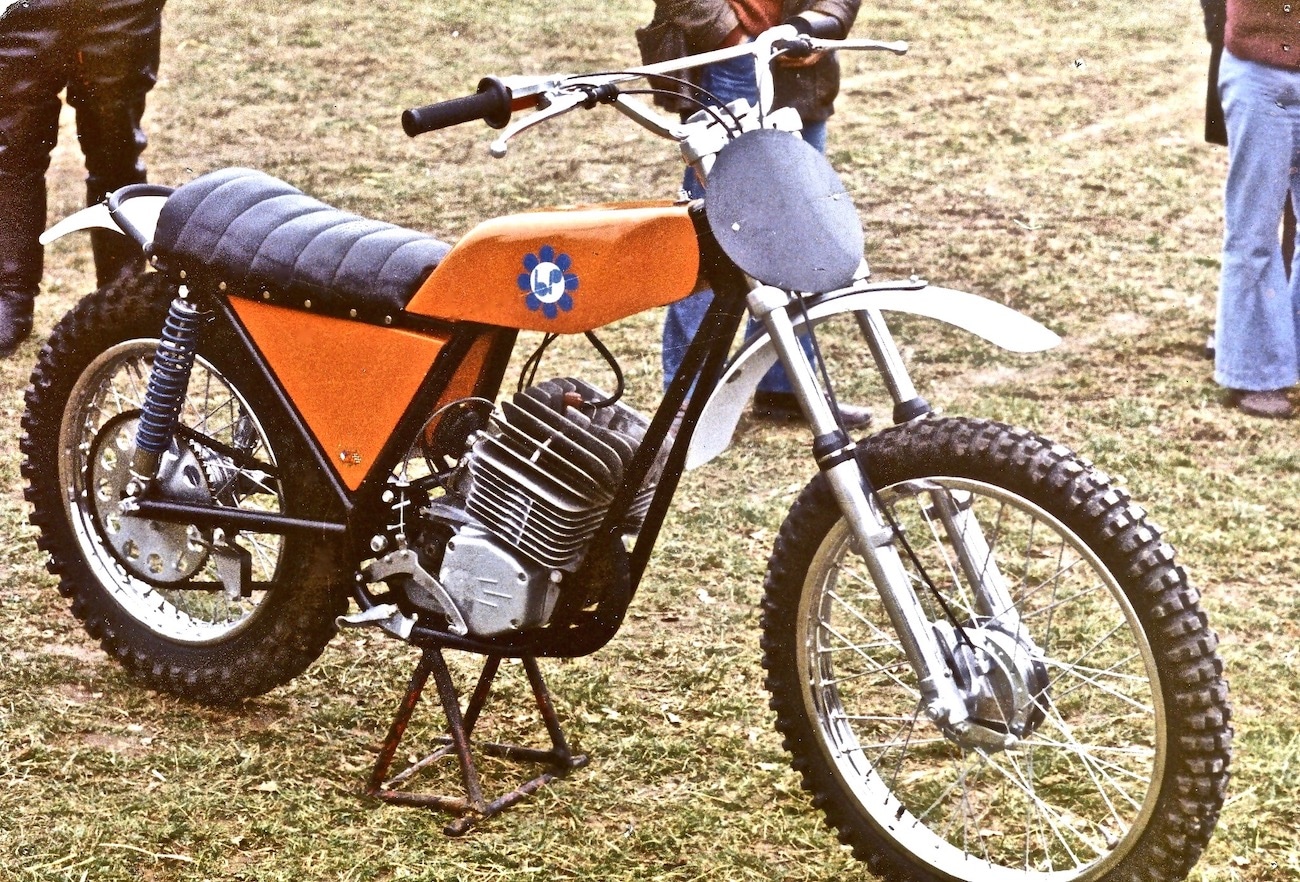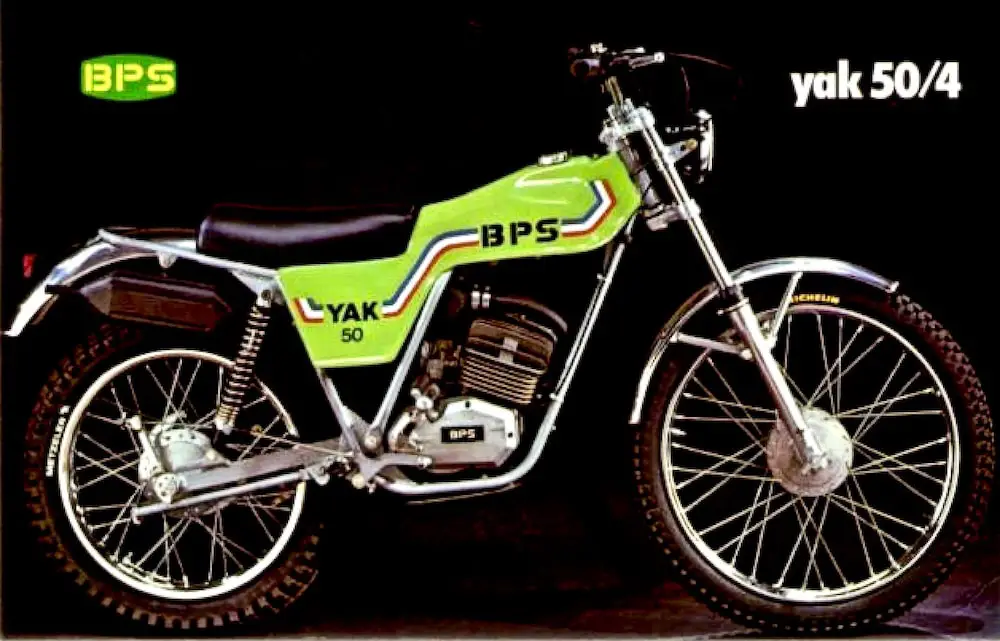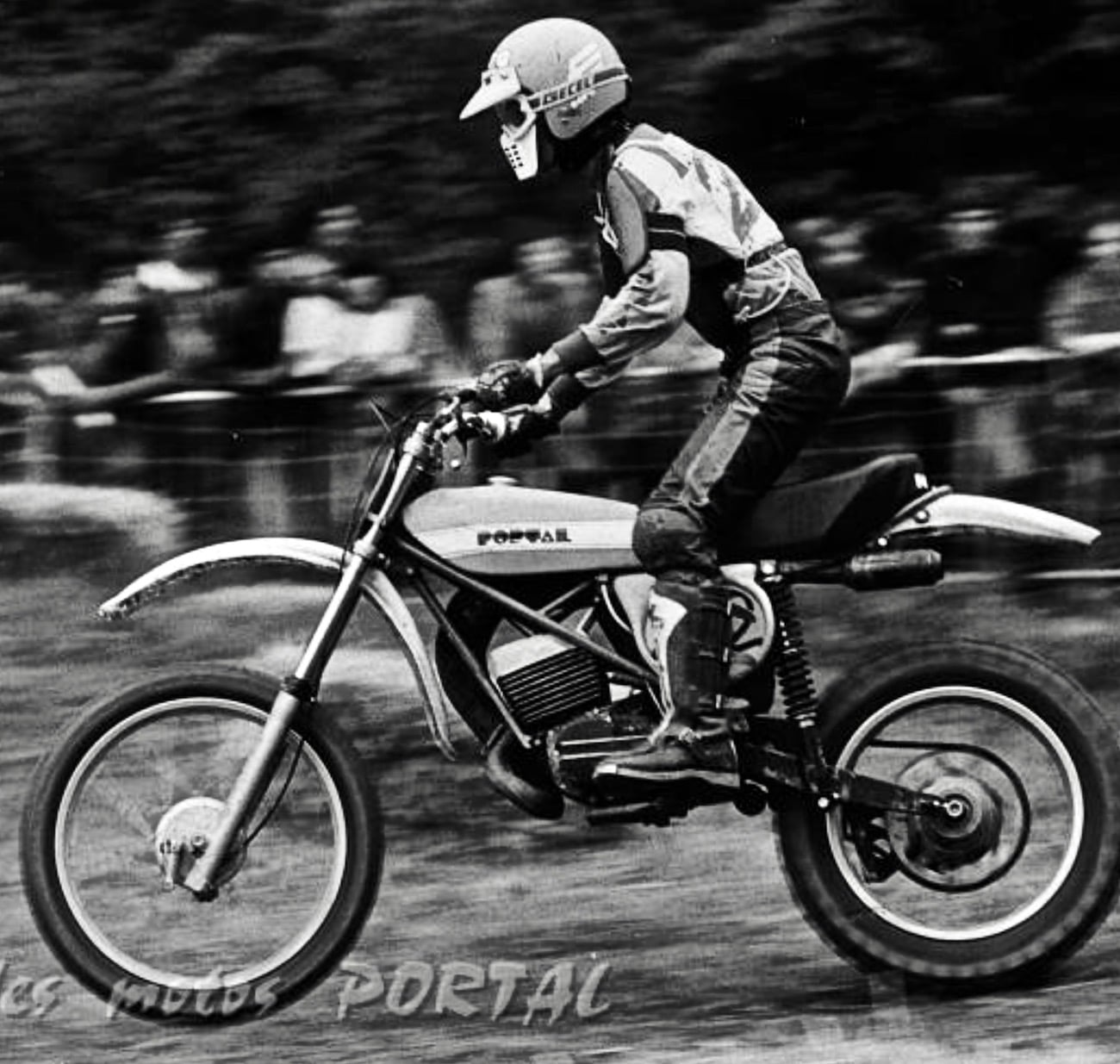BIKES YOU’VE NEVER SEEN BEFORE: THE FRENCH-MADE BPS 125 ELAN & PORTAL TRELLIS FRAME
 Note the lack of a gas cap on this 1975 Sachs powered BPS 125 Elan. The air filter is where the gas tank was normally found and the fuel was held under the seat.
Note the lack of a gas cap on this 1975 Sachs powered BPS 125 Elan. The air filter is where the gas tank was normally found and the fuel was held under the seat.
Jacques Boudet was the French importer for AJS motorcycles and the president of Moto Club Rouergat, when he met Gilles and Denis Portal at the race track. He told the two famous French racers that he wanted to build a French dirt bike. The Portals liked the idea and together they formed Motos Boudet-Portal, BP for short, in 1970. Unfortunately, they ran afoul of the giant BP oil company and eventually changed their name to BPS. Their first prototype in 1971 was a Puch-powered 125 that featured the airbox where the gas tank normally was the the gas tank under the seat. By 1973 they were ready to go into production the BPS 125 Elan. The Puch engine had been dropped for the more readily available Sachs 125 engine that was used in lots of boutique 125 race bikes. They built a 125, 175 and small run of Maico 400 engined machines.

This is a 1978 BPS Navaho RC50.
By 1975 they were producing 1600 bikes a year and made a deal to import Italian-built SWM motorcycles to France—the private-label deal allowed them to remove the SWM logos and put BPS in its place. They also expanded the BPS line with a range of 50cc Navaho bikes with Minarelli engines.

The Minarelli powered BPS Yak 50 bikes were a big sellers in France. The Yaks came in different engines sizes and off-road or trials versions.
They built a new factory in 1976 and hoped to sell 2500 motorcycle a year with the release of the Yak 50 and Yak 125—in addition to the arrival of the long-awaited Sachs seven-speed 250. They even started on a project to build their own engine, but never got it to production. The history of BPS saw them use a wide variety of engines from outside suppliers. They used engines from Puch, Sachs, Maico, Minarelli and Aspes.
 The Italian brand SWM didn’t sell their motorcycles in France in the early 1970s, so BPS imported them and changed the name on the tanks from SWM to BPS.
The Italian brand SWM didn’t sell their motorcycles in France in the early 1970s, so BPS imported them and changed the name on the tanks from SWM to BPS.
In 1977 they opened up an all-new factory and switched from Sachs to rotary-valve Rotax engines and sales jumped to 5000 units year, but by 1978 the writing was on the wall. French law, which had allowed 16-year-olds to ride engine sizes up to 125cc was reduced to 80cc—and sales slumped. Worse yet, the SWM factory set up an importer to bring the Italian brand to France—without relabeling it as a BPS. The company struggled until 1983 before closing its doors. In retrospect what BPS achieved in France from 1973 to 1983 was impressive for a company with a workforce of only 30 people.
 The Portal Ranger came in 125, 250 and 420 models—all powered by Rotax engines. It was an attractive bike with a strange trellis hanger frame.
The Portal Ranger came in 125, 250 and 420 models—all powered by Rotax engines. It was an attractive bike with a strange trellis hanger frame.
But that wasn’t the end of the story. Denis and Gilles Portal had left BPS when the company started rebadging SWMs as BPS bikes. They were opposed to the effort. They left the BPS project to found their own brand—Portal. The first models were released in 1975 with Sachs engines and for a short time with CZ engines.

Denis Portal was the 1966 250 French National Motocross Champion. He started at BPS, but had a disagreement over private-labeling SWMs as BPS’s. So, he started Portal Motorcycles.
It was in 1977 the Portal 250 Ranger reached fruition when they got 125, 250 and 420 Rotax engines. For a brief period of time the Portal was cutting edge. The most distinctive feature of the Portal 250 Ranger was its unique trellis-style hanger frame and dropped rear shock mounting. Portal went out of business at the same time as BPS.
 This Portal 420 has Betor forks and the weird dropped bottom shock mount that came on some, but not all, Portal models.
This Portal 420 has Betor forks and the weird dropped bottom shock mount that came on some, but not all, Portal models.
 This 1982 Portal’s trellis frame harkens back the days of the 1959-1961 birdcage Maseratis.
This 1982 Portal’s trellis frame harkens back the days of the 1959-1961 birdcage Maseratis.






Comments are closed.